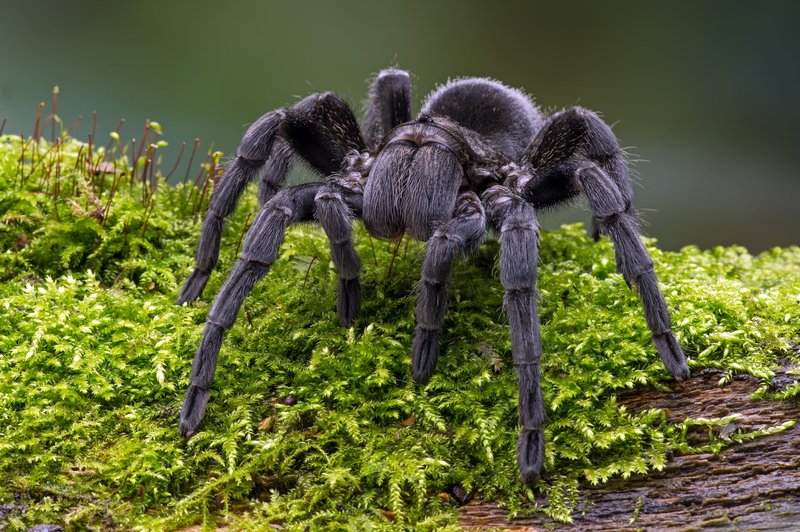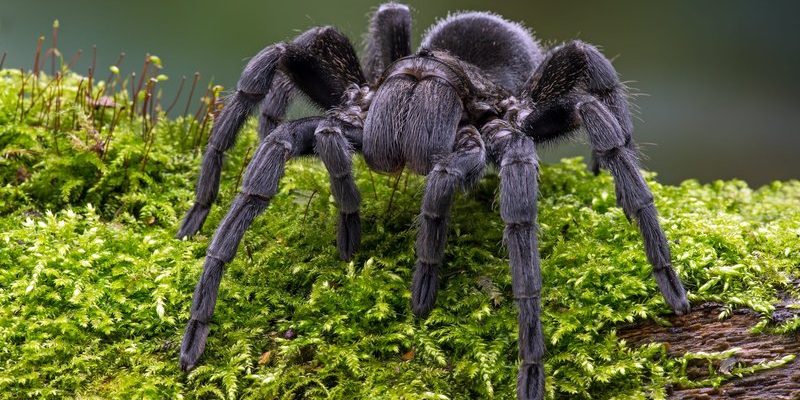
Brazilian black tarantulas, scientifically known as *Grammostola pulchra*, are native to the tropical rainforests of South America, specifically found in Brazil. However, their habitat stretches a bit further, encompassing other regions of South America. Understanding where these spiders live helps us appreciate their role in the ecosystem and the particular environments they thrive in. So, grab your coffee, and let’s explore the wild world of the Brazilian black tarantula.
Characteristics of the Brazilian Black Tarantula
Before we pinpoint their location, it’s essential to understand what makes Brazilian black tarantulas unique. These tarantulas are known for their plush black bodies—give them a closer look, and you might even see a slight hint of purple sheen. Typically, they can grow up to 5-6 inches in leg span, making them one of the larger tarantula species. With their thick bodies and long, hairy legs, they might seem intimidating, but they are generally calm and not as aggressive as other spider species.
You might be wondering about their behavior. Brazilian black tarantulas are predominantly ground-dwelling spiders. They spend a lot of time burrowing into the forest floor, where they create silk-lined burrows to hide from predators and search for prey. These sites can become bustling little worlds filled with insects and small animals, showcasing the intricate balance of nature.
Also, Brazilian black tarantulas are nocturnal. This means they hunt and forage during the night, making it their mission to capture insects, crickets, and occasional small vertebrates. Their role as predators helps maintain the balance in their ecosystem, contributing to population control among their prey.
Geographical Distribution
Now, let’s talk geography! Brazilian black tarantulas are primarily found in Brazil, but they can also inhabit parts of neighboring countries like Paraguay and Argentina. These regions have the perfect combination of warm temperatures and humidity, which are essential for the tarantula’s survival.
Their main habitats include the Amazon Rainforest, which is rich with life, and other areas with dense vegetation like wooded savannas and subtropical forests. Rainforests offer plenty of cover, which is crucial for their hunting and nesting habits. The vast trees and thick underbrush create a wonderful environment for these spiders to thrive.
You might be surprised to learn that despite their name, Brazilian black tarantulas do not only occupy the Amazon region. They’ve been spotted in other parts of Brazil, including the Mato Grosso region, where the climate remains warm and humid. This adaptability showcases just how resilient these spiders can be!
Preferred Habitats
So, what does the ideal habitat for a Brazilian black tarantula look like? Generally, they thrive in tropical and subtropical environments where dense foliage protects them from predators and harsh weather conditions. Their homes are often situated close to moisture-rich areas, like streams or damp soil, which is vital for their survival.
These tarantulas prefer to dig deep burrows into the soil, where they can hide from the bright sunlight of the day. Some even line their burrows with silk to create a cozy space. Picture it as a spider-sized penthouse! This behavior not only protects them but also serves as an effective hunting spot, allowing them to ambush unsuspecting prey.
Moreover, Brazilian black tarantulas are keen on areas with ample foliage. The undergrowth provides them with both shelter and hunting grounds. The complex layers of the rainforest mean they’re never too far from a meal, which is vital for their growth and health.
Factors Affecting Their Habitat
Like many species, Brazilian black tarantulas face various challenges in their natural habitat. Deforestation is one significant issue. As trees are cut down for logging or to make way for agriculture, the spiders lose their homes and hunting grounds. It’s like losing your favorite coffee shop—disappointing and disruptive!
Climate change is another factor impacting their habitat. Changes in temperature and rainfall patterns can affect the delicate balance of the ecosystems where these spiders thrive. Drier conditions or extreme weather can reduce the availability of both food and suitable living conditions for them.
Conservation efforts are essential to protect the habitats of these remarkable tarantulas. By promoting awareness and sustainable practices, we can help ensure that these unique creatures continue to thrive in the wild.
Behavior in the Wild
In the wild, Brazilian black tarantulas exhibit fascinating behaviors that can intrigue anyone interested in the natural world. As nocturnal hunters, they emerge at night when temperatures drop, allowing them to hunt more effectively. You might see them ambushing insects or scurrying across the forest floor, which can be a thrilling sight for those lucky enough to witness it.
These spiders are also known to display territorial behavior. They defend their burrows against potential intruders, which can lead to fierce encounters with other spiders. Think of it as a tiny battle for the best real estate in the rainforest!
Interestingly, while they can be defensive, Brazilian black tarantulas aren’t typically aggressive towards humans. If you were to spot one in the wild, it might prefer to retreat than engage. That’s a good reminder that they have their place in the ecosystem and should be respected.
So, where is the Brazilian black tarantula found in the wild? To sum it up, these remarkable spiders flourish in the rich, humid environments of Brazil, particularly within the Amazon rainforest and adjacent regions. They thrive in dense foliage, where they can hunt effectively and stay hidden from predators.
As we reflect on these amazing creatures, it’s clear that they play a vital role in their ecosystem. Protecting their habitats and promoting conservation efforts is essential for their survival. Next time you think about the Brazilian black tarantula, consider the intricate web of life in the rainforest that helps sustain it. Understanding their habitat not only sparks interest in their world but also highlights the importance of keeping nature balanced.

